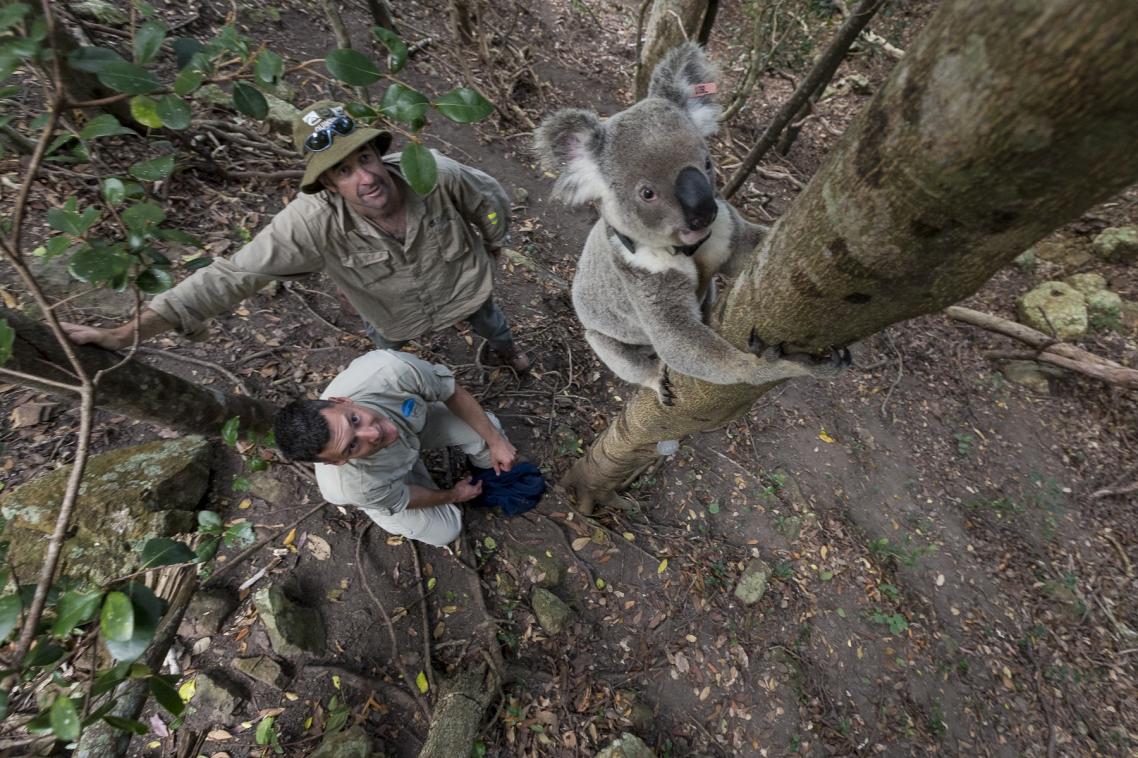Male koalas raise their voices to avoid conflict

A team of international scientists has tracked the love lives of koalas, uncovering some curious behaviours and finding that male koalas make their distinct bellows to avoid confrontation with competitors.
The University of Queensland’s Dr Bill Ellis and colleagues in Australia, the US and Japan have mapped what they believe to be the first-look inside the social system of a large group of wild koalas at St Bees Island near Rockhampton, Queensland.
“Unlike humans, who raise their voices in an argument, male koalas bellow their presence to avoid confrontation with other males in the breeding season,” Dr Ellis said.
“They can tell who’s bigger from their calls, and stay away from them.
“At the same time, they use their bellows to attract females.”
Dr Ellis, a research fellow in UQ’s School of Agriculture and Food Sciences and the Sustainable Minerals Institute, said the social system of the koala was poorly known, despite the fact they were a charismatic and well-known species.
“Much of the koala’s social and mating behaviours remain unquantified,” he said.
“We had thought that in the mating season male koalas would be fighting more, but instead found that the males bellowed to reduce physical confrontations with other males.
“This allowed them to space themselves apart, with little direct mating competition, while at the same time attracting females and increasing the rate of male-female encounters.”
The researchers also found that females spent more time together in shared spaces or trees during the mating season than in the non-breeding season.
The researchers mapped koala interactions using GPS-enabled tracking collars on wild koalas to learn about the species’ mating system.
“Every koala in the study had a radio collar so we were able to map all their interactions, such as when female koalas dashed over several hundred metres to visit males in the middle of the night - something which would be hard to do by visual sightings,” Dr Ellis said.
He said the researchers concluded that indirect male-male competition, female mate choice, and possibly female competition, mediated sexual selection in koalas.
“The next step for us will be to do a paternity analysis of the offspring produced during male-female encounters and correlate that with our radio tracking,” he said.
“This will help us to see which interactions were the most successful, and try to work out why.”
The research, by Dr Ellis, Dr Sean FitzGibbon, Dr Ben Barth, Associate Professor Stephen Johnston and Associate Professor Jenny Seddon, all from UQ; Dr Geoff Pye and Mr Bill Whipple of San Diego Zoo; Dr Alistair Melzer (Central Queensland University); Associate Professor Damien Higgins (University of Sydney); and Professor Fred Bercovitch (Kyoto University), is published today in PLOS One.
The project was funded by Queensland Smart Futures through a Queensland State Government Koala Funding Grant and by San Diego Zoo and the Koala Education and Conservation Program EAZA/AZA partners.
Media: Dr Bill Ellis, w.ellis@uq.edu.au, +61 428105275.
Topics
Related articles

Strict regulations for street stalls a drain on vibrancy

Queensland underground data reshapes our understanding of tectonic plate stress
Media contact
UQ Communications
communications@uq.edu.au
+61 429 056 139
